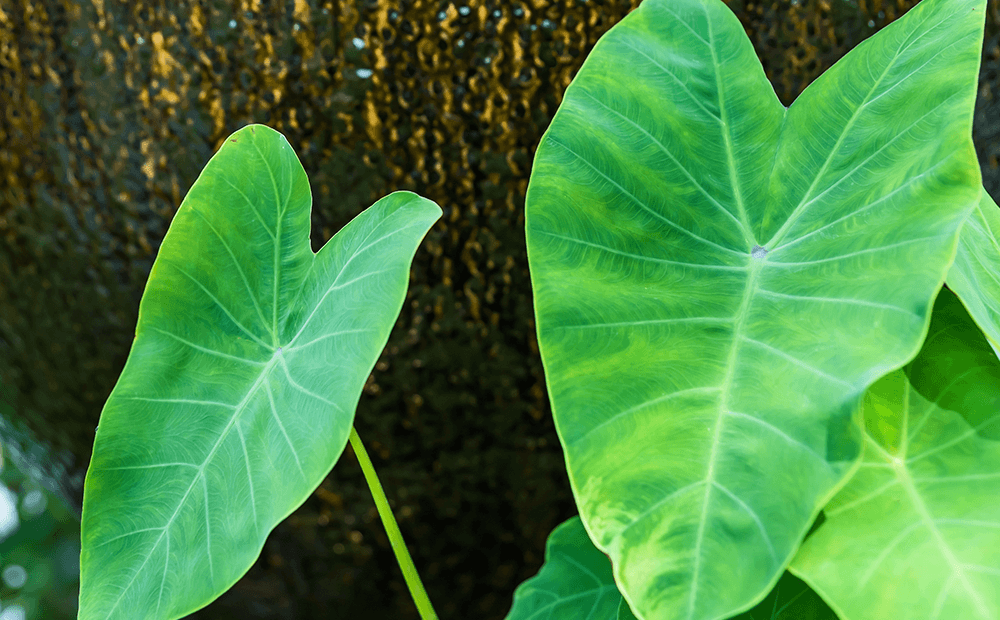HOW TO TRANSITION TENDER PERENNIALS INDOORS
Did you add some exotic-looking annuals to your garden this year with large leaves or lush tropical flowers? There are quite a few plants sold as annuals that are tropical perennials—and you can actually transition indoors to use again in your garden next summer! There are some massive bonuses to doing this:
Your plants will be even bigger next year because they’re starting from established roots, not from seed or cuttings.
You’ll have to buy fewer annuals next year.
Many of them can be divided, or you can take cuttings from them to create even more plants for next year’s garden.
Some of them make great houseplants over the winter.
The Risk of Transitioning Tender Perennials Indoors
It seems like a win-win situation! But, of course, there’s one crucial thing you need to look out for when you’re planning to do this: pests!
There are many pests around when our plants are outdoors, but there is also usually a balance of predators like spiders, birds, and ladybugs that keep the population in check. Since most of those predators don’t live in our houses (we hope!), you have to be careful to check for and treat any pests when you bring tropical perennials inside.
Tropical Perennials to Bring Inside
There are quite a few tender perennials that we grow as annuals in Indianapolis. Some of these tender perennials will transition straight as houseplants that keep living through the winter, and some need to transition to a period of dormancy.
Here are 20 common garden plants that you can transition to overwinter as houseplants indoors:
Agapanthus
Agave
Aloe Vera
Angels Trumpet
Bamboo
Basil
Begonia
Bird of Paradise
Boston Ferns
Bougainvillea
Cacti
Chives
Citrus trees
Coleus
Cordyline
Croton
Dracaena
English Ivy
Fuchsia
Gardenia
Here are 13 tender tropical perennials that need to transition to dormancy for winter storage:
Alocasia
Banana (Musa)
Brugmansia
Caladium
Calla Lilies
Canna Lilies
Colocasia
Dahlias
Ginger
Gladioli
Lantana
Ornamental Grasses
Sweet Potato Vine
How to Transition Tender Tropical Perennials Indoors for Winter
You should start the process of transitioning your tender perennials indoors sooner than later since frost is likely to happen soon here in the Indy region.
How to Transition Tender Perennials Indoors
If your tender perennials are in the ground, trim back the foliage 20-30%, pot them into pots with drainage and indoor potting soil.
Move them to a shady spot after potting, then into the garage at night.
Place them outdoors during the day for a few hours, then in the garage again, gradually decreasing outdoor time over a week until they're fully indoors.
Bring to a room indoors where they can be quarantined for two weeks—inspect closely and treat for pests.
Finally, give them a bright but cool place for the winter—water lightly when the soil is dry 2 inches deep.
How to Transition Tubers, Corms, and Bulbs Indoors
Canna and Calla lilies, Gladioli, and Dahlias grow from tubers and corms that are too tender to survive winters in the ground in Indiana.
Watch the weather closely; leave them out for a first light frost; this will help them start the transition to dormancy.
Dig up tubers, corms, and bulbs, brush off the dirt, trim back the roots to about .5 an inch, then lay them out to dry on a rack or newspaper for about a week in a cool, dry place.
Store for the winter in mesh bags or cardboard boxes somewhere cool and dark with good air circulation. The ideal storage temperature is between 40-50F.
Check through the winter for rotted bulbs and discard any you find.
How to Transition Ornamental Grasses, Caladium, Colocasia, or Alocasia Indoors
Leave them out for the first frost; this will prompt them to go into dormancy.
If they're in the ground, dig them up and cut the foliage right back to about 1-inch tall. For grasses, pot in containers with good drainage. For bulbs and roots, brush off soil and wrap in paper.
Store somewhere cool and dark that remains no lower than 40F.
Water grasses lightly only when the soil is very dry.
If you’ve never transitioned your tender perennials indoors for the winter before, why not give it a try this year? If you need pots, soil, insecticide, or tools, stop by the garden center to pick up whatever you need.





